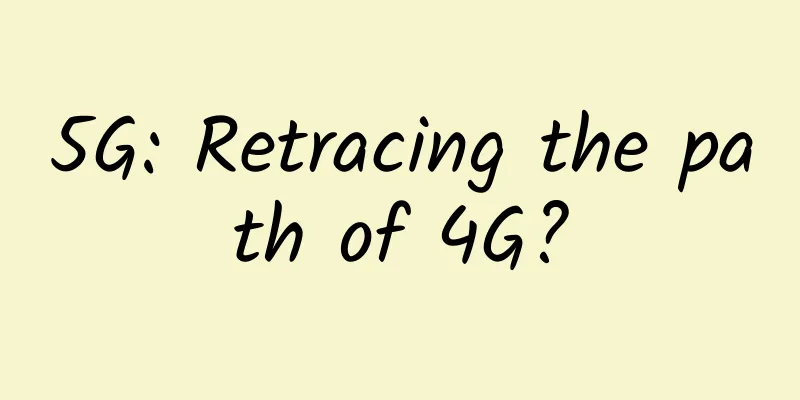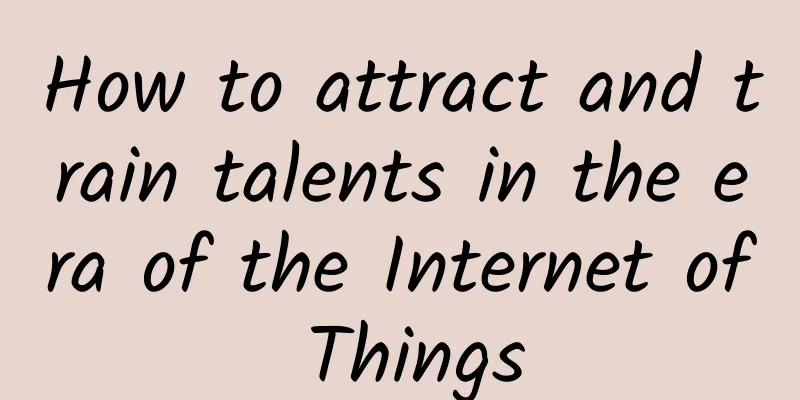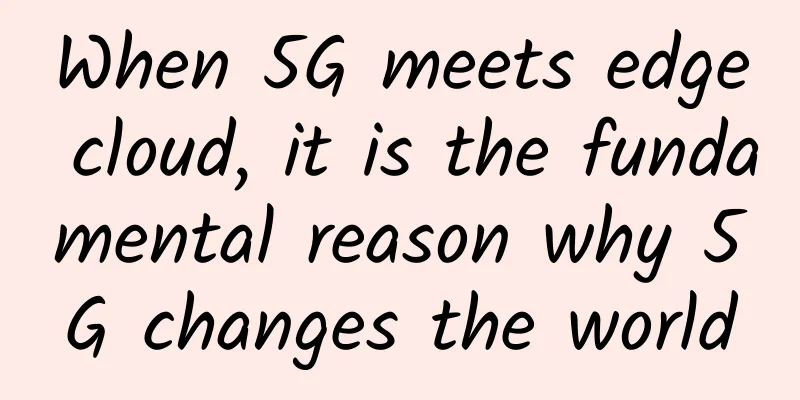5G: Retracing the path of 4G?

|
2 years, 350 million. This is the answer given after two years of 5G development in China. Quietly, more than two years have passed since the first year of 5G. During this period, China has built the world's largest 5G mobile network and become a pioneer in the 5G era. But differences also ensued. Without suitable application support, C-end users have little perception, and the "5G is useless" theory is common. The "beautiful" 5G is a little "skinny" in reality. Many users often only have two feelings about 5G: "fast" and "expensive". In addition to the lack of C-end application scenarios, the popularization of 5G still faces many challenges.
challengeAs the latest generation of cellular mobile communication technology, the Release-15 standard initially used by 5G is only a temporary standard developed to adapt to the early commercial deployment of 5G. In July 2020, the international standards organization 3GPP announced the freezing of the R16 standard, marking the completion of the first evolution version of the 5G standard. In December of the same year, 3GPP decided to complete the freezing of the R17 version protocol code in June 2022. This means that before the R17 version is frozen, 5G is just a "defective product" that can only achieve independent networking.
my country plays a vital role in the formulation of 5G standards. Data shows that among the 23 5G standard projects, more than half of them are reported by Chinese companies. In addition, my country accounts for as much as 33% of the world's 5G essential patents. If you want to wear the crown, you must bear its weight. While 5G development has achieved fruitful results, it also faces challenges in many aspects. The first is the high cost of trial and error as a pathfinder. As the exploration of 5G applications in China enters the "forefront of the world", there is no relevant experience for B-side users, especially for related applications, which requires a greater trial and error cost than in the 3G/4G era. In terms of consumer applications, C-side services still need to be explored continuously. At present, 5G has not yet inspired "killer" applications such as "mobile payment" and "short video" in the 4G era. In addition, as the underlying transmission network, 5G is of great significance to the technological advancement of the ICT industry, and the applicable scenarios of 5G's advantages such as "low latency, slicing technology and edge computing" also require continuous attempts to find the right direction of development. The large investment in operating and construction costs of base stations cannot be ignored. After Luoyang Unicom announced in August 2020 that it would shut down some 5G during off-peak hours, the three major operators said they would selectively shut down 5G base stations to reduce operating costs. According to the Economic Daily, this move will reduce the daily power consumption of 5G base stations by more than 30%. However, a 30% reduction in power consumption is just a drop in the bucket compared to a more than 3-fold increase in energy consumption. Compared with 3G and 4G technologies, 5G technology has obvious advantages in terms of fast network speed, low latency, and significantly improved reliability and security. But everything has two sides. To achieve the above advantages, the 5G signal bandwidth and bit rate are significantly improved compared to 4G, which leads to a significant decrease in signal transmission distance. In theory, to achieve signal coverage in the same area, the density of 5G base stations will be 3-4 times that of 4G, and the overall energy consumption will be more than 9 times that of 4G. Public data shows that the typical power consumption of a 4G base station is about 1,300W, while the typical power consumption of a 5G base station is close to 3,500W. In 2018 alone, the mobile base stations of the three domestic operators consumed about 27 billion kWh of electricity, with electricity costs of about 42 billion yuan. Under the same coverage conditions, the power consumption of 5G networks will exceed 240 billion kWh, with electricity costs of about 210 billion yuan. The global problem of 5G power consumption has become a concern for operators. As of 2020, the number of 5G base stations in my country has exceeded 700,000, a year-on-year increase of 438%, accounting for 80% of the world's 5G base stations. However, for the vast Central Plains, it is still a long way to go to achieve 5G wide-area coverage. According to estimates, an average of one 5G base station is required every 200 meters in the city center, and due to the weak penetration of 5G signals, more dense 5G base stations will still need to be built in densely populated areas in the future. It is conceivable that the increased costs due to the promotion of 5G will continue to increase in the future. status quoIn 2019, the Ministry of Industry and Information Technology released a promotional video titled "5G, the Future Is Here", which envisioned related scenarios of future 5G life and smart society, such as AR display of text, simultaneous interpretation, drone delivery, remote classrooms, telemedicine, unmanned driving, smart logistics, etc. Today in 2021, many scenarios have been realized. 5G digital vaccination equipment has been put into use in various places, AR glasses for "smart hospitals" were also unveiled at the recent Big Data Expo, and the development of new energy vehicle driverless technology has also made great progress in recent years. However, in sharp contrast to the rapid popularization of the B-end field, C-end users still have little perception of 5G. "Think about what we do on our phones that require fast internet speeds, it's nothing more than watching videos and playing games, and these needs are also met under 4G. The experience will certainly be higher with 5G, but there's always a feeling of overkill," said "Hello, teacher, my name is Mr. He," a well-known UP host at Bilibili. Unlike the 4G era, which had a promotion period of more than five years, the transition from 4G to 5G is very rapid. Data shows that the 5G market share in my country's smartphone market has rapidly increased from 1.7% in the first quarter of 2020 to 8.5% in the fourth quarter of 2020. In the first quarter of 2021, 5G mobile phone shipments in the domestic market reached 71.3% of shipments. At the same time, the three major operators are also accelerating the construction of 5G base stations driven by policies such as "new infrastructure" and have begun to scramble for market share. As 5G networks continue to expand and the number of 5G terminals increases, ordinary consumers on the C-end are more concerned about one issue: in addition to using speed test software such as Speedtest to spend gigabit of traffic to test the speed, what other usage scenarios can enable us to personally experience the technological advances brought about by 5G networks? Back in 2019, Zhang Jie, a digital enthusiast who has been in the technology circle for several years, was also full of questions about this. In order to find the answer, he bought a 5G mobile phone. You have to know that at that time, 5G mobile phones were still very expensive, and the package charges were high, and the signal coverage was poor. If users wanted to experience the 5G network, they even had to check the operator's 5G network coverage in advance. After arriving at the designated location, they had to enter the mobile phone settings and turn on the 5G switch before they could experience it. "I was very surprised by the network speed of up to 100M/S. I can drag the progress bar at will when watching videos without lag, and it only takes a few seconds to download software." However, Zhang Jie also said that since his hometown is not in first-tier cities such as Beijing, Shanghai, Guangzhou and Shenzhen, the 5G signal coverage in his hometown is not good. Even in cities such as Beijing, Shanghai, Guangzhou and Shenzhen, the 5G signal coverage was still poor at that time. In this regard, Zhang Jie also expressed his fear of using the 5G network for a long time, for fear of missing important information due to poor network and other reasons. Zhang Jie has now settled in Shanghai, and he has replaced 6 5G terminals in the past two years. "The current 5G mobile phone experience is much better than before. On the one hand, the coverage of 5G signals has been significantly improved. On the other hand, various mobile phone manufacturers have attached importance to the research and development of 5G mobile phones. The battery capacity has increased and fast charging technology has been popularized, and the battery life of products has been significantly improved." But he still hasn't found the answer to the question. For him, 5G is just a label of "fast". While the perception is not strong, the current 5G package charges are also slightly high. According to the official APP of a certain operator, the minimum consumption standard of its 5G package is 129 yuan, which provides 500 minutes of voice calls and 30G traffic. Data shows that in March 2021, the average mobile Internet access traffic per household reached 9.5GB. Among them, it is normal for many young people in Generation Z to use more than 30G of traffic per month. Most of these people are just entering the workplace and do not have ample funds. The current 5G packages are unlikely to attract them to upgrade actively. Just like when 4G networks first became popular, users once complained about the high fees. However, with the implementation of the operators' "speed up and reduce fees" policy and the rise of applications such as short videos and live broadcasts, the number of 4G package users has increased year by year, and 4G has gradually become an indispensable part of people's lives. It is undeniable that due to the large initial investment and long payback period, the 5G package charges are also at a relatively high level in the early stage of promotion. But at the same time, in the context of low 5G network penetration and poor signal quality, a certain threshold has been inadvertently established to avoid network quality degradation due to too many users and to ensure user experience. futureWhen 4G was first launched, users still maintained their 3G usage habits. They did not know the impact that the popularization of 4G networks would have on their lives, and complained about the uselessness of 4G and the expensive package charges, just as we are dissatisfied with 5G today. Looking back at people's predictions about 4G back then, we can certainly see some clues to the future, but it seems that they were just down-to-earth and lacked some fantastic imagination. At that time, mobile phone manufacturers and mobile operators all realized that 4G would greatly improve the convenience of mobile payments, and they combined 4G with NFC as the best solution. However, they never expected that they would be overtaken by a small QR code and easily replaced cash. Ordinary users believe that the high-speed 4G network will greatly improve the convenience of watching high-definition videos on mobile phones, but few people expected the explosion of short video business; the majority of journalists believe that the 4G network will become a powerful assistant in the field of professional news live broadcast in the future, but they never expected the arrival of the era of national live broadcast. In addition, e-commerce, food delivery, and online car-hailing services have emerged. In just a few years, 4G and the related industries it has spawned have quietly changed our lives. But in the past, we simply thought that 4G speed had increased. People’s predictions about the future are often limited by current technology and thinking. No one expected that 4G would enable the mobile Internet to grow into a towering tree in just a few years. 5G technology provides more fertile soil for mobile Internet, and its future development will still exceed imagination. Perhaps, as Mr. He said in his video: "Five years later, we will find that speed is actually the most boring application of 5G." Final ThoughtsUndoubtedly, 4G and 5G networks will coexist in the short term, and the impact of 5G networks on C-end consumers still needs to be improved through appropriate applications. However, the impact of 5G networks on the industrial Internet has already begun to emerge, and has even broken through the application scenarios of optical fibers. It is not difficult to imagine that it is only a matter of time before C-end users enjoy the technological dividends related to 5G networks. The current prevalence of "5G is useless" is just a historical limitation. Just as people back then could not predict the impact of 4G on life, we are no different with 5G. However, 5G will definitely bring more changes to the future than 4G. |
<<: Challenging the NB-IoT and LoRa market? A new round of competition in the LPWAN field
Recommend
Critical documentation in data center transformation
Documentation is often neglected in IT work. When...
Kurun: $59/year-2GB/40GB/1TB@500M/China Telecom CN2 GIA/China Unicom CUII9929/China Mobile CMIN2
Kurun is a domestic merchant founded in 2019. Its...
Cisco ushers in a new era of networking
The recent WannaCry ransomware cyberattack target...
HostYun: Los Angeles CN2 GIA line cheap version online, 1GB memory package monthly payment starts at 15 yuan
HostYun recently launched a low-cost package for ...
Review of the computing power network in 2021: The computing power is surging, and the power is growing together
The sun and the moon are moving forward, the rhyt...
Should operators delay 5G deployment plans until 2021?
In 2020, the sudden outbreak of COVID-19 is havin...
The three major operators may announce the commercial use of 5G messaging by the end of this year to replace SMS
Nowadays, few people send text messages except fo...
Why are iOS and Android game data not interoperable? The truth is revealed
One day you get tired of it and want to switch to...
Energy consumption transformation issues of traditional IDC in the 5G era
[[387217]] In the modern society where technology...
edgeNAT newly launched South Korea SK direct connection VPS with 20% discount on monthly payment and 30% discount on annual payment, 2G memory package starts at 48 yuan/month
edgeNAT has newly launched the Korean three-netwo...
Distinguish between fat AP and thin AP, full WiFi signal coverage will be easy
Wireless AP is an access point for users who use ...
Why is WiFi on buses not as popular as on subways?
Public transport Wi-Fi operator 16Wi-Fi recently ...
RongCloud's Yang Pan: Empowering Enterprises to Communicate
[51CTO.com original article] As an indispensable ...
5G phones are now online. How long can 4G phones last? Can old phones use 5G networks?
With the advent of 5G technology, 5G has become a...









